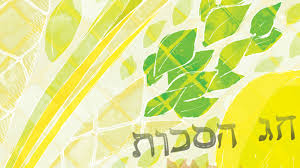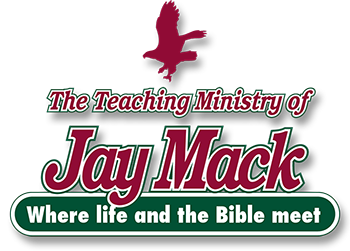Conflict at the Feast of Booths

The most joyous of all festive seasons in Isra’el was that of the Feast of Booths or Sukkot. It fell on a time of year when the hearts of the people would naturally be full of thankfulness, gladness, and expectancy. All the crops had been long stored; and now all fruit had been gathered, the vintage past, and the Land only awaited the softening and refreshment of the “latter rain,” to prepare it for a new crop. It was appropriate that when the start of the harvest had been blessed by offering the first ripe sheaf of barley, and the full ingathering of the corn by the two wave-loaves, there should then be a harvest feast of thankfulness and gladness to ADONAI.927
Arnold Fruchtenbaum discusses the prophetic view of the seven feasts of Isra’el. He observes that the program of the First Coming of Messiah fulfilled the first four feasts. The first four feasts come within fifty days of each other. The feast of the Passover was fulfilled by the death of the Meshiach; the feast of Unleavened Bread was fulfilled by the sinlessness of His sacrifice; the feast of First Fruits was fulfilled by the resurrection of Jesus; the feast of Shavu’ot was fulfilled by the birth of the Church. This ends the first cycle of feasts, which were fulfilled in the program of the First Coming.
Between the first four and the last three feasts there was a four-month interval mentioned in passing in Leviticus 23:22. It was a pause between the two sets of feasts during which time life was to continue along normal lines. It is pictured as a summertime of labor in the fields in preparation for the final harvest of the summer and before the fall harvest would come.
When you reap the harvest of your Land, do not reap to the very edges of your field or gather the gleanings of your harvest. Leave them for the poor and for the foreigner residing among you. I AM the LORD your God (Leviticus 23:22).
It is a one-verse statement that is not related to any feast. It almost seems like an unnecessary interruption unless it is understood what is really happening. It is the pause between the feasts that are fulfilled by the program of the First Coming as opposed to the feasts to be fulfilled by the program of the Second Coming. This four-month interval pictures the insertion of the Dispensation of Grace (see my commentary on Hebrews, to see link click Bp – The Dispensation of Grace), which interrupts the program of the seven Feasts of Isra’el. Indeed, the gleanings for the poor and the foreigner are a very good illustration of the mission of the Church itself. John writes of Yeshua saying to His talmidim: Don’t you have a saying, “It’s still four months until harvest?” I tell you, open your eyes and look at the fields! They are ripe for harvest (John 4:35). Yes, this four-month interval becomes a fitting symbol of the obligation of the Church, made up of Jewish and Gentile believers, to evangelize the world (Matthew 28:18-20). So, Leviticus 23:22 is a parenthetical verse, representing the current age in which we now live, in which the program of the Feasts of Isra’el have been temporarily interrupted.
The last three feasts in the second cycle of feasts also all come together, even closer together than those of the first cycle of feasts. In fact, they all come within two weeks of each other. The last three of these feasts of second cycle are to be fulfilled by the program of the Second Coming of Yeshua ha-Mashiach.
The feast of Trumpets will be fulfilled by the Rapture of the Church; the Great Tribulation will fulfill the Day of Atonement; the Messianic Kingdom will fulfill the feast of Sukkot. Just as the feast of Booths is a time of rejoicing following the affliction of the Day of Atonement, even so, the messianic Kingdom is to be a time of rejoicing following the afflictions of the Great Tribulation.928
We have all heard the questions from our Jewish friends or family: If Yeshua is the real Messiah, why didn’t He fulfill all the promises of the Scriptures? Why are there still wars and problems if the Messiah has already come? Good questions indeed if you stop and think about it! Yet many of us have found sufficient answers as we began to study the Scriptures more carefully. Although many of Jews presume that Yeshua cannot fit the description of the Messiah, even the classical rabbis could see that the larger question of Mashiach was not so easily answered. The fact is that there appears to be two contrasting pictures of what the Messiah would do when He comes to Isra’el. No doubt, the Mashiach would establish an everlasting Kingdom of peace and blessing with headquarters in Jerusalem (Isaiah 11; Micah 4). Yet, in seeming opposition to this, many other Scriptures speak of a suffering Messiah who is rejected by many people (Isaiah 53; Daniel 9).
Many of the early rabbis were puzzled by these statements and wondered how could these two aspects could possibly be reconciled in one person (see Mv – The Jewish Concept of Two Messiahs). A proposed solution is put forth various times that there must be in fact two different Messiahs coming to fulfill the two differing job descriptions. They called the King Messiah “Mashiach Ben David” since he would be the greater son of David. The suffering one was designated as “Mashiach Ben Yosef” since he appears to suffering much in the same manner as Joseph (Jacob’s son) in the book of Genesis (Babylonian Talmud Sukkah 52a).
As we approach the High Holy Days, I believe there is some important evidence that is often overlooked in regard to Messiah’s two-fold ministry. Sukkot (The Feast of Booths), besides being a celebration of the fall harvest, is also understood to be a prophetic picture of the Kingdom of Messiah. We build our Sukkot/temporary huts to remind us of the great truth that the day is coming when Messiah will “dwell or tabernacle” in our midst and fulfill the promises as the son of David. This must be the reason that Prophets foretell of the Kingdom celebration of this feast among all the redeemed, both Jew and non-Jew: Then it will come about that any who are left of all the nations that went against Jerusalem will go up from year to year to worship the King, the Lord of hosts, and to celebrate the Feast of Tabernacles (Zechariah 14:16). It makes sense that Sukkot will be the preeminent feast in the Kingdom since Messiah is now dwelling with His people!
Yet within this Fall feast is also hidden the secondary aspect of Messiah’s work; namely His suffering for the atonement of our sins. This means that there must be some kind of connection between Sukkot and the First Coming of the Messiah as the Messianic Jews would see it. I find it interesting that there has always been some debate about when Yeshua was actually born in the world. Most Western Christians celebrate Christmas on December 25 as the designated day to remember the Messiah’s First Coming. Perhaps many people, both Jews and Gentiles, have overlooked the important holy day of Sukkot as God’s time to celebrate the First Coming of Messiah as well? As the Jewish believer wrote in the first century: In the beginning was the Word, and the Word was with God, and the Word was God . . . And the Word became flesh and dwelt (literally, tabernacled) among us (John 1:1 and 14).
The last day of Sukkot is an additional festival day that the Torah calls The Eighth Day (see the commentary on The Life of Christ Gp – On the Last and Greatest Day of the Feast). If Yeshua was born on the first day of the feast of Booths, they must have circumcised Him on the day called the “Eighth Day,” thereby literally fulfilling the scripture which says: On the eighth day the flesh of his foreskin shall be circumcised (Lev 12:3).
How perfect! As the writer thinks of the First Coming of Yeshua, he makes the connection to our ancient feast of Sukkot. Indeed, Messiah dwelt with His people at His First Coming to Isra’el as Ben Yosef. Through His death and resurrection, Yeshua of Nazareth is able to fulfill the other aspect of the Messianic call as Ben David. He is returning soon to complete the whole plan of the Father. By Rabbi Barney Kasdan



Leave A Comment